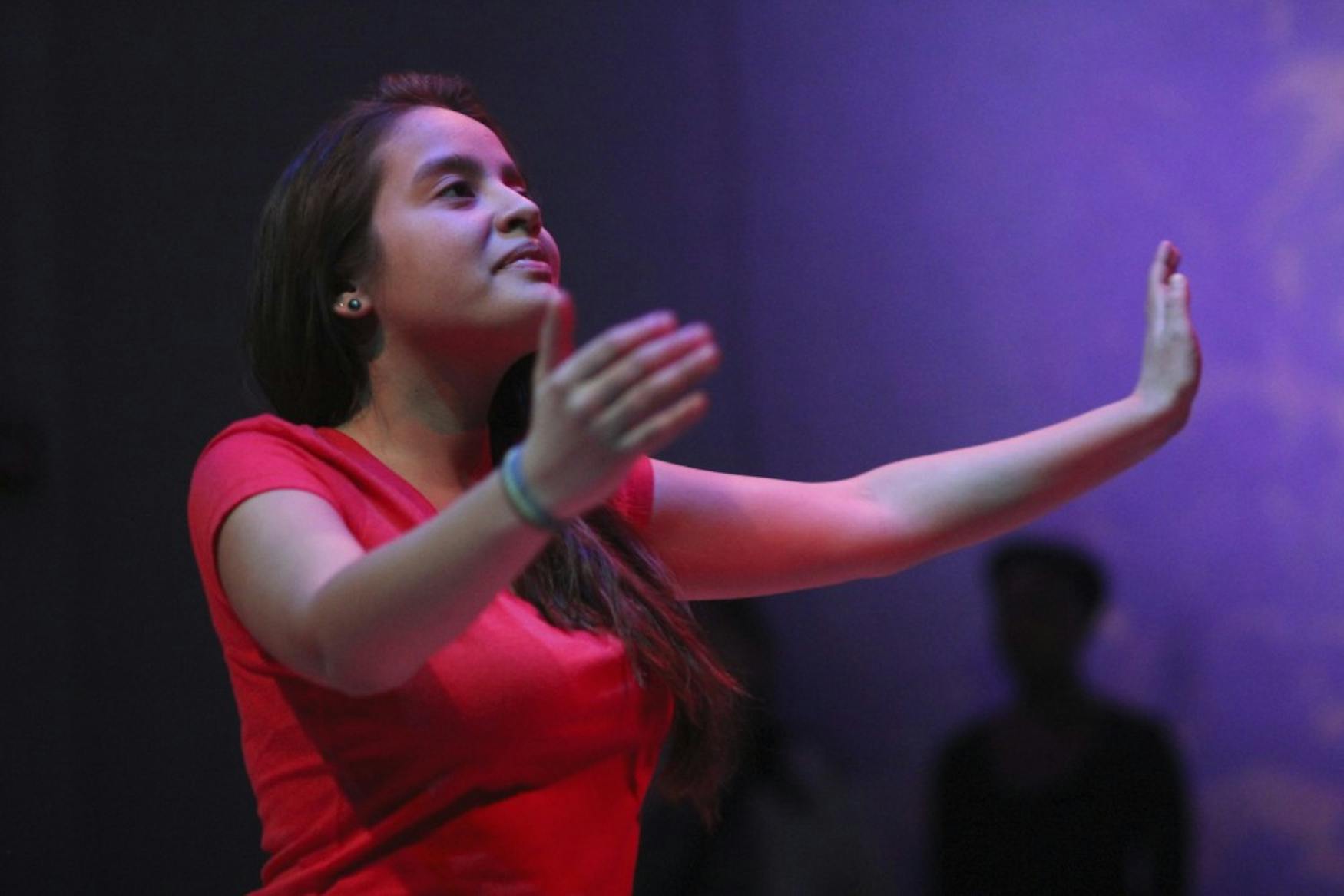Dance production spins through cycles of life
Two Dance Stories explores a life narrative through symbolism, movement and sound. Prof. Susan Dibble (THA) performed the piece on Saturday night in the Mainstage Theater of the Spingold Theater Center. Although Dibble has an extensive background in modern dance, she presented dance as a story of daily hardships in each character’s life.
The show was divided into two parts. The first, “Here, There, and Everywhere,” was a comedic dance story guided the audience through the fun and bumpy parts of life. The dance followed a ghost (Dibble) who wore nothing but a white bed sheet, a red ribbon around her neck and black dress shoes. The audience, along with the ghost, watched as each of the nine characters battled the various difficulties often presented in life. These struggles highlighted the frustration, impatience and sadness of the characters as they struggled to see the bright side of their situations. The silly yet simple and faceless ghost led each character in a new direction by grasping their attention with small but uplifting choreography.
Dibble’s inspiration for “Here, There, and Everywhere” originated from her personal life experiences. Dibble wrote, in an email to the Justice that growing up in a small town with quirky, imaginative and passionate people influenced the personas in the piece. By examining each character’s personality, Dibble reflected on her personal form of motivation and applied it to the story. It seems like Dibble turns to humour and looks at the positive side of every situation as a form of recovery from life’s challenges. She mentioned that she wanted to create a piece using the ghost character that would present humour and life’s obstacles side by side. By setting the piece in a small town, filled with humble people experiencing hardships in life, the ghost’s character became powerful. The ghost’s presence on stage, relationship with each character and overall positivity was well reflected through its interactions with the audience and movement.
The second piece, “Stop All the Clocks,” began. Under dim stage lights, Ms. and Mr. Shadow of Time, played by Dibble and her friend Jim Nutter, a professional performer, respectively, danced upstage. The pair slowly brought a cup and plate together, stacking each item on top of the other and then separating the objects. They continued this movement numerous times throughout the piece. As the dance continued, W. H. Auden (Alex Jacobs MFA ’14) narrated, speaking about time and its relation to life.
Aside from the spoken poetry, composer David Remedios worked with Dibble to create the music for this particular dance scene. Dibble expressed that the inspiration for Remedios’ score was based on conversations and ideas that he and Dibble had discussed prior to setting the piece on the dancers. The dance story also represented phrases and words Dibble pulled from poems that Prof. John Plotz (ENG), chair of English department, recommended to Dibble. Dibble explained that the inspiration for this piece came from the poems she read as well as the concept of time. She said, “When the clock stops, we all let go, breathe, and feel a sense of calm.” Her choreography reflected this through the repetition of movements and sudden changes in direction and speed.
Both pieces, although very different, were very reminiscent of the moments people are likely to experience when growing up and growing older. “Here, There, and Everywhere” was performed in 2012 at Shakespeare & Co. in Lenox, Mass. But Dibble made a few casting changes when she staged the piece this past weekend. With the exception of original cast members Susannah Millonzi and Jim Nutter, Dibble assembled a diverse mini company including undergraduate students and professional performers to perform the work. Dibble stated that the size of the cast felt like a small company, which “made the spirit of the experience very rewarding”.
The production was thought-provoking and inspiring, and I recommend everyone attend a production directed by Dibble. Her artistic taste presents dance as a narrative and form of storytelling rather than a physical gesture.



Please note All comments are eligible for publication in The Justice.